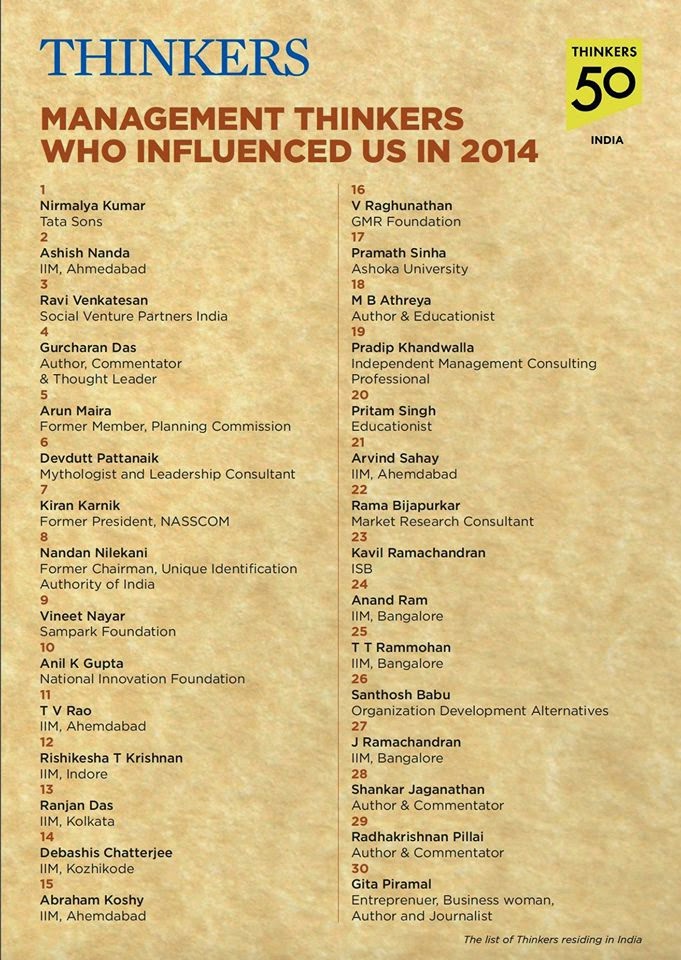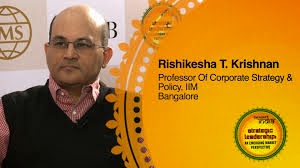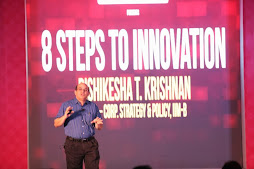The state of innovation at multinational (captive) centres
in India resembles a kaleidoscope with multiple hues and colours, and a degree
of flux as their fortunes wax and wane with changes in their parents’
strategies and performance.
Is “Emerging Market” excitement waning?
Much of the excitement about innovation for emerging markets
that was visible a year or two ago appears to have been tempered by the
challenges posed by the global economic environment. Market and investment
challenges overshadow the technical ones. India’s failure to fulfill its growth
and market potential threatens to cast a shadow on the growth plans of these
captive centres. They now face the possibility of being restricted to their
traditional roles of maintenance, testing and back office support, and even
that may be at risk as our cost advantages erode and productivity levels fail
to take off.
Indian Centres are no Longer Immune to Global Ups and Downs
At one time, Indian centres were immune to the layoffs and
downsizing of their parent companies. That’s no longer true as is evident from
the downsizing of General Motors’ R&D centre in Bangalore, the shrinking of
Motorola’s R&D presence (particularly striking because Motorola was one of
the early pioneers of offshoring software R&D) and Dow Chemicals’ reversal
of its decision to set up a large R&D facility at Pune. When NetApp recently announced a global downsizing thanks to a dip in corporate profits,
their India development centre saw a loss of jobs as well.
A Tough Time Ahead?
MNC R&D subsidiaries in India may have a tough time
ahead. The cost advantage of Indian R&D manpower has considerably declined
over time. At senior levels, employees expect to be paid at levels comparable
to those in the parent; at the entry level the earlier 4 or 5x benefit is now
done to around 2 or 2.5x. Many companies believe that labour productivity is
lower in India, and that’s not surprising given the infrastructural constraints
that employees have to overcome in getting to office and back! Attrition
continues to further dilute productivity though the slowdown in the industry
should have a sobering effect. And, as one senior MNC R&D executive told me
recently, “Indian engineers today are not daunted by any challenge, but they
have a sense of entitlement that prevents them from giving their best.”
But Opportunity as well…
However, there is opportunity as well. For one, the nature
of R&D in some industries is changing. In telecom for example, the success
of Apple and Google has brought into question the traditional paradigm of
standards-driven or operator-directed innovation. Instead, innovation is
becoming more consumer-driven and increasingly resembles the challenges faced
by the consumer durables industry with some elements of Fast Moving Consumer
Goods (FMCG) thrown in as well. Google’s acquisition of the mobile handset
business of Motorola (Motorola Mobility) exemplifies this changing trend.
New Innovation Approaches: The Case of Ericsson
Even highly “engineering-driven” companies such as Ericsson
are feeling compelled to embrace a user-driven innovation approach. I recently
had the opportunity to hear Gabriel Broner, Global Head of Innovation at
Ericsson talk about his company’s new approach to innovation under the umbrella
of their Innova innovation programme. Their innovation approach is based on a framework
from the iconic design firm, Ideo: Inspiration, Ideation, and Action. The starting
point is identification of unarticulated customer needs using a design thinking
approach. Action is focused on rapid experimentation. A specially trained Innova
Squad uses the design thinking methodology to solve problems as well as diffuse
the process through the organization.
Experimentation is a major focus including “testing without
building” the entire equipment. Focus is on value for customers – e.g. one
customer said, “we understand that the network will go down on occasion, but
more important is how quickly can you get it up and running again?”
Some employee-driven innovations have made big contributions
like using a graphics card to speed up hardware simulation and a software
solution developed for customers to avoid a costly hardware upgrade for LTE.
One of the challenges of the innovation program is obtaining
a greater degree of strategic alignment. One way this is being achieved is by
challenges thrown from the top - one such challenge got a very good solution
from the India team that has been recognized.
During Broner’s recent visit to Bangalore, Ericsson had
organized a design thinking workshop and an opportunity for teams to pitch
their ideas with the possibility of on-the-spot funding. Innovation expenditure
is currently at 0.5 to 1% of budget. Broner made an interesting comment during
his interaction with Ericsson Bangalore employees: “We can’t afford something
like the Google 20% rule – where will the RoI come from?”
Conclusion
It’s now upto the Indian employees of Ericsson and other leading
MNCs to take advantage of such opportunities that come their way.
From a personal perspective, its good to see companies
launching elaborate innovation programmes with a lot of emphasis on
participation, user-oriented thinking and experimentation. These are some of
the core ideas we have emphasized in 8 Steps to Innovation.


















